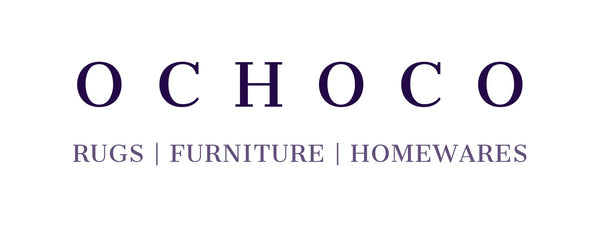
The Beauty of Hand-Woven Rugs
Share
Hand-Woven Rugs Explained. Discover the Craft and Beauty Behind These Timeless Pieces
Hand-Woven Rugs are not just floor coverings; they are masterpieces created with skill, tradition, and a deep connection to history. These rugs offer something special that mass-produced options simply can't match: a unique blend of artistry, craftsmanship, and cultural significance. In this blog, we’ll dive into what hand-woven rugs are, the materials used, the different types of weaving techniques, and how they’re made. Let’s explore the beauty and timeless appeal of these exceptional pieces.
What Materials Are Hand-Woven Rugs Made From?
The materials used in hand-woven rugs directly impact their quality, durability, and aesthetic appeal. Traditional materials include:
- Wool: Known for its softness, durability, and natural insulating properties, wool is a common choice for hand-woven rugs. It absorbs dyes beautifully, allowing for rich, vibrant colours.
- Wool Blends: Blending wool with other materials, such as viscose, bamboo silk, and polyester, can dramatically enhance the texture and durability of a rug. Each blend brings its unique combination of softness, durability, and visual appeal.
- Cotton: A more affordable option, cotton is often used in flatweave rugs and is known for its lightweight feel and ease of care.
- Silk: For a luxurious touch, silk is sometimes used in hand-woven rugs. Its smooth, glossy finish adds opulence and sophistication to any space.
- Hemp & Jute: Hemp and jute are eco-friendly fibres used in hand-woven rugs, offering a natural, rustic aesthetic.
These natural fibres not only enhance the rug’s appearance but also contribute to its longevity. By choosing high-quality materials, you’re investing in a piece that can last for generations.
Types of Hand-Woven Rugs
Hand-woven rugs are versatile, and each technique creates a distinct look. Below are the most popular styles:

Flatweave rugs are created by interlacing warp and weft threads without creating a pile. This technique results in a thinner, reversible rug with a sleek finish. Kilims are the most famous type of flatweave rug and are known for their bold geometric patterns and vibrant colours. These rugs are ideal for those who want a lightweight, versatile rug that’s easy to maintain.

A braided weave is created by intertwining multiple threads to form a thick, textured rug. These rugs have a more rustic, homely feel and can work in a variety of settings, from cozy living rooms to country-inspired spaces. They are often seen in entryways, kitchens, or even bedrooms, where durability and comfort are key.
Looped Pile Weave Rugs (Textured)

In a looped pile weave, the yarn is woven into loops, creating a textured surface. These rugs have a plush feel and are highly durable, making them suitable for high-traffic areas. The loops are tightly packed, ensuring the rug maintains its shape and structure over time.

Rugs with a Pile can also be either machine-made or hand-woven. These rugs have a pile because of the way they are constructed, either by hand-tying knots or by using a loom.
How Hand-Woven Rugs Are Made

Creating a hand-woven rug is a meticulous, labor-intensive process that requires a deep understanding of the materials, techniques, and design principles. Here's how it unfolds:
Preparing the Materials
The first step in making a hand-woven rug is selecting the materials. Traditional hand-woven rugs are crafted from natural fibres like wool, cotton, or silk—each material contributing to the durability and aesthetic of the rug. Modern rugs may also incorporate synthetic materials, but the natural fibres still hold a significant place due to their sustainability and long-lasting qualities.
The Weaving Process
Once the materials are ready, artisans set up a loom, where the warp threads are placed vertically across the frame. The weft threads are then woven horizontally over and under the warp threads. Depending on the style, this process may involve techniques like flatweave or braided weave, where the threads are tightly interlaced to create patterns or textures.
In a flatweave, the rug will have no pile, making it thinner and more flexible. This technique is ideal for creating geometric patterns and linear designs that add a modern or traditional flair to any room. Braided weave involves intertwining strands of yarn to create a textured, often thicker, finish. On the other hand, looped pile weave uses a looping technique to create a plush texture with a durable, long-lasting finish.
The Final Touches
After the weaving is complete, the rug is carefully trimmed and finished. The edges are secured to prevent fraying, and any loose threads are removed to ensure a neat and tidy look. In some cases, the rug may also be washed to enhance the colours and bring out the richness of the materials. The result is a stunning piece of functional art.
Why Choose Hand-Woven Rugs?
Hand-woven rugs are more than just decorative pieces; they are a celebration of culture, craftsmanship, and creativity. Here’s why they’re a great choice for any home:
- Durability: Hand-woven rugs are made to last, with high-quality materials that can withstand years of use.
- Versatility: Whether you’re decorating a modern apartment or a traditional home, there’s a hand-woven rug to suit every style.
- Eco-Friendly: Made from natural fibres, hand-woven rugs are environmentally friendly, ensuring minimal impact on the planet.
The Takeaway
Hand-woven rugs are a testament to the beauty of traditional craftsmanship and the timeless art of weaving. Whether it’s the flat, sleek design of Flatweave rugs, or plush Textured Rugs, or exquisite Piled Woven Rugs, each piece is unique and full of character.
If you’re looking for a rug that not only adds beauty to your space but also tells a story, Ochoco's Hand-Woven Rugs are the perfect choice. So, next time you’re shopping for a rug, remember: it’s not just about the design, it’s about the craftsmanship, the materials, and the centuries-old traditions that make each hand-woven piece truly special.
